- Home
- Safaris
- Volunteering
- Responsible Trips
- Faq’s
- Cost of Tanzania Safari
- Is it Safe to Visit Tanzania?
- When to Visit Tanzania
- How to book a Tanzania Safari?
- Vaccinations for Tanzania safari
- Booking Flights
- Sustainable Travel in Tanzania
- Why Travel to Tanzania?
- Meals during a Tanzania safaris
- Tanzania Visa Information
- Responsible Travel in Tanzania
- Toilets on Safari
- Recommended duration for a safari in Tanzania
- What to wear during a Tanzania Safari
- Information About Tipping during Tanzania safari
- Which is the cheapest safari?
- About us
- Contact
- Share a Home with us
Tanzania Safari vs Kenya Safari which destination is right for you?
Tanzania Safari vs Kenya Safari
Overview
Nature Responsible Safari will guide you through Tanzania safari vs Kenya safari It’s important to take into account your tastes and what you wish to experience on your wildlife trip while deciding between a Tanzania safari and a Kenya safari. Although both nations provide fantastic chances for safari excursions, each has its own distinctive characteristics. Let’s contrast safaris in numerous ways between Tanzania and Kenya to help you determine which location is best for you.
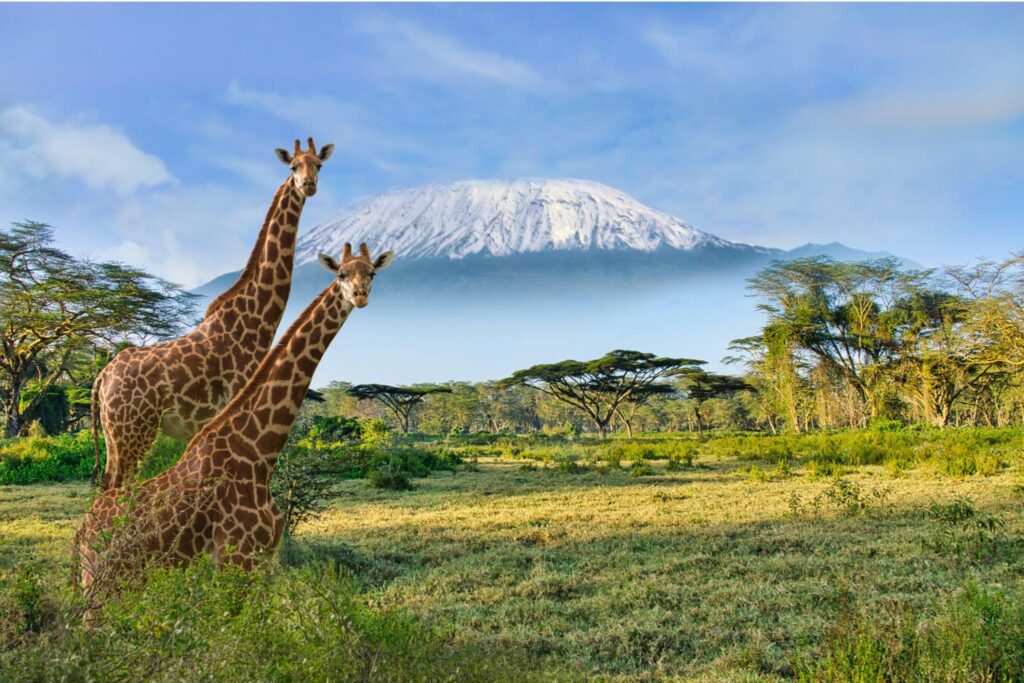
Wildlife Diversity
Tanzania
Tanzania is known for its expansive and pristine wilderness areas, including iconic locations like the Serengeti National Park and the Ngorongoro Crater.
The Serengeti is famous for the annual Great Migration, during which millions of wildebeests and zebras migrate in search of fresh grazing, attracting predators like lions, cheetahs, and hyenas.
The Ngorongoro Crater is a unique natural wonder, often referred to as the “eighth wonder of the world.” It is a vast caldera with a high concentration of wildlife, including the Big Five.
Other notable Tanzanian national parks and reserves, like Tarangire National Park and Lake Manyara National Park, also offer excellent opportunities to spot a wide variety of wildlife.
Kenya:
Kenya’s wildlife diversity is showcased in its diverse landscapes, from the open savannahs of Maasai Mara to the dense forests of Aberdare National Park.
Maasai Mara is renowned for its high concentration of wildlife, especially during the Great Migration season. It offers exceptional opportunities to see not only the Big Five but also cheetahs, hyenas, and various antelope species.
Amboseli National Park, known for its breathtaking views of Mount Kilimanjaro, is famous for its large elephant herds.
Other national parks like Tsavo East and Tsavo West are known for their diverse wildlife populations, including rhinos, leopards, and buffalos.
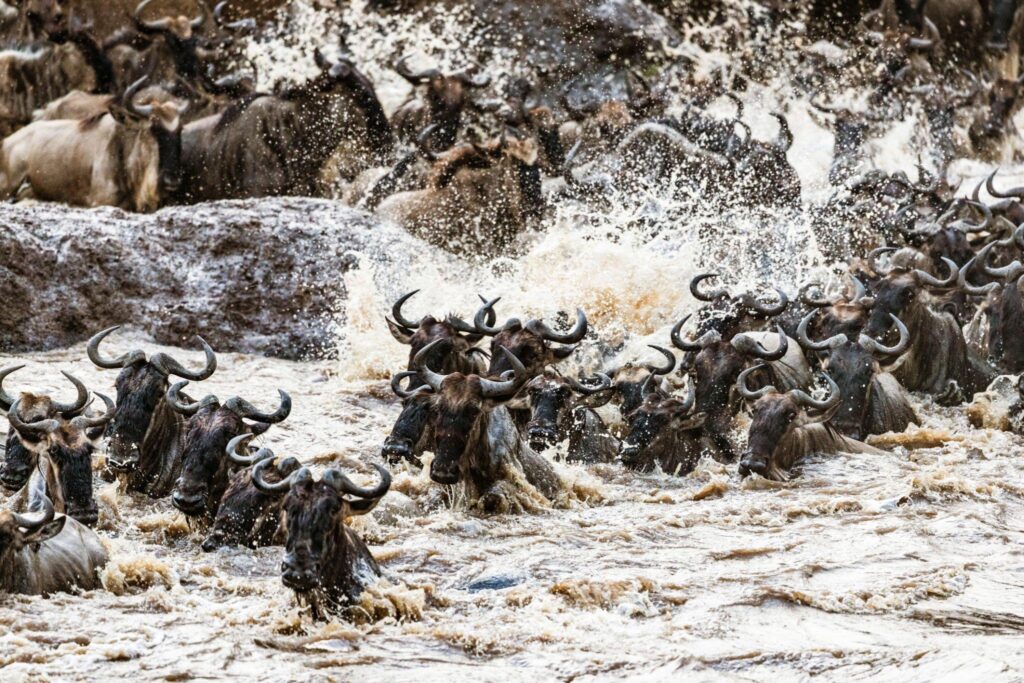
Great Migration
Tanzania:
The Great Migration begins in Tanzania’s Serengeti National Park, where massive herds of wildebeests, zebras, and other herbivores start their annual journey.
This migration typically begins in the southern Serengeti around December and January, during the calving season when thousands of wildebeest calves are born.
As the dry season progresses, the herds move northward, following the rains and the lush grass. The most dramatic river crossing scenes often occur when they attempt to cross the Mara River, usually between July and September.
Witnessing the river crossings in Tanzania’s Serengeti is indeed a unique and unforgettable experience. It’s a time when crocodiles and other predators are on the prowl, creating dramatic predator-prey interactions.
Kenya:
The Great Migration extends into Kenya’s Maasai Mara National Reserve, which shares a border with Tanzania’s Serengeti.
During the months of July to October, the Maasai Mara becomes a prime location to witness river crossings as the migrating herds cross the Mara River into Kenya.
The Maasai Mara is known for its open grasslands and vast savannahs, making it an ideal setting for observing the Great Migration.
This period is also marked by numerous predator-prey interactions, as lions, cheetahs, and hyenas take advantage of the abundance of prey.
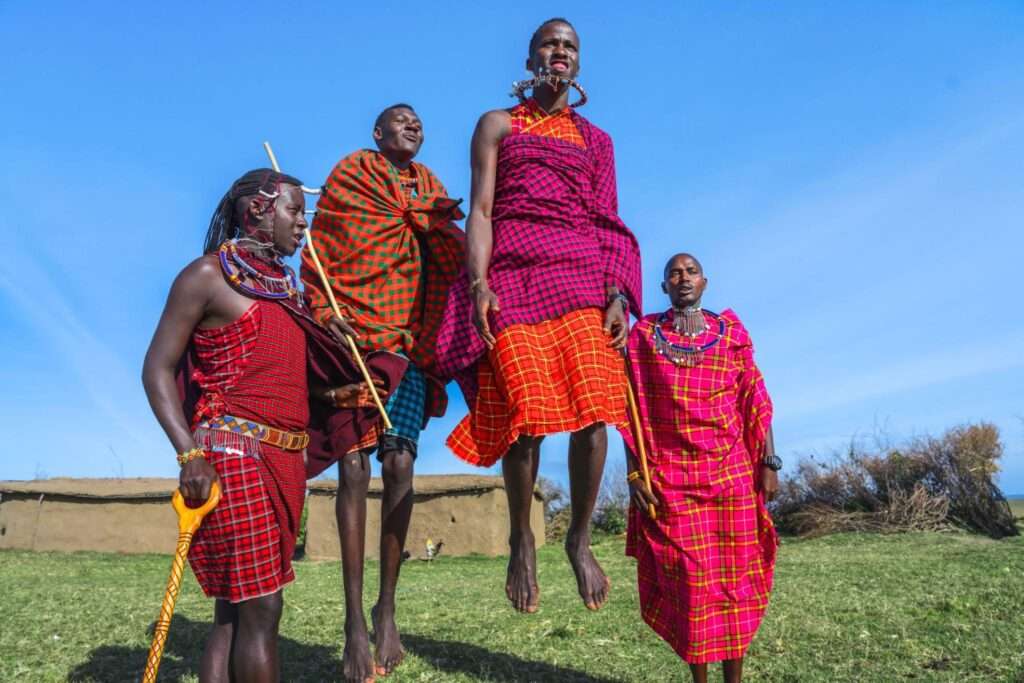
Cultural Experiences
Tanzania:
Maasai Culture: The Maasai people are one of Tanzania’s most well-known ethnic groups. You can engage in cultural interactions, visit Maasai villages, and learn about their traditional customs, including dances, rituals, and ceremonies.
Hadzabe Tribe: In the Lake Eyasi region, you have the opportunity to visit the Hadzabe tribe, one of Tanzania’s last hunter-gatherer communities. You can learn about their unique way of life and participate in activities like hunting and gathering.
Chaga Culture: In the Kilimanjaro region, you can explore the Chaga culture, known for its distinctive architecture, the Chaga banana beer, and traditional ceremonies.
Swahili Culture: Along the coastal areas, particularly in places like Zanzibar and Stone Town, you can immerse yourself in Swahili culture, characterized by its rich history, vibrant markets, and unique blend of African, Arabian, and Indian influences.
Kenya:
Maasai Culture: The Maasai people are iconic in Kenya as well. You can visit Maasai villages, participate in traditional dances, and learn about their nomadic lifestyle, beadwork, and warrior traditions.
Samburu Culture: The Samburu tribe, closely related to the Maasai, inhabits northern Kenya. You can experience their culture, known for its colorful clothing, jewelry, and ceremonies.
Cultural Tours: In various parts of Kenya, you can go on cultural tours that provide insights into the daily lives, traditions, and practices of different ethnic groups, such as the Kikuyu, Luo, and Luhya.
Lamu Island: On Lamu Island, you can explore the unique Swahili culture and architecture. The island is a UNESCO World Heritage site and offers a glimpse into the history and customs of the Swahili people.
Nairobi: Kenya’s capital city, Nairobi, has several cultural attractions, including the Karen Blixen Museum, the Nairobi National Museum, and the Bomas of Kenya cultural center, where you can witness traditional dances and crafts.
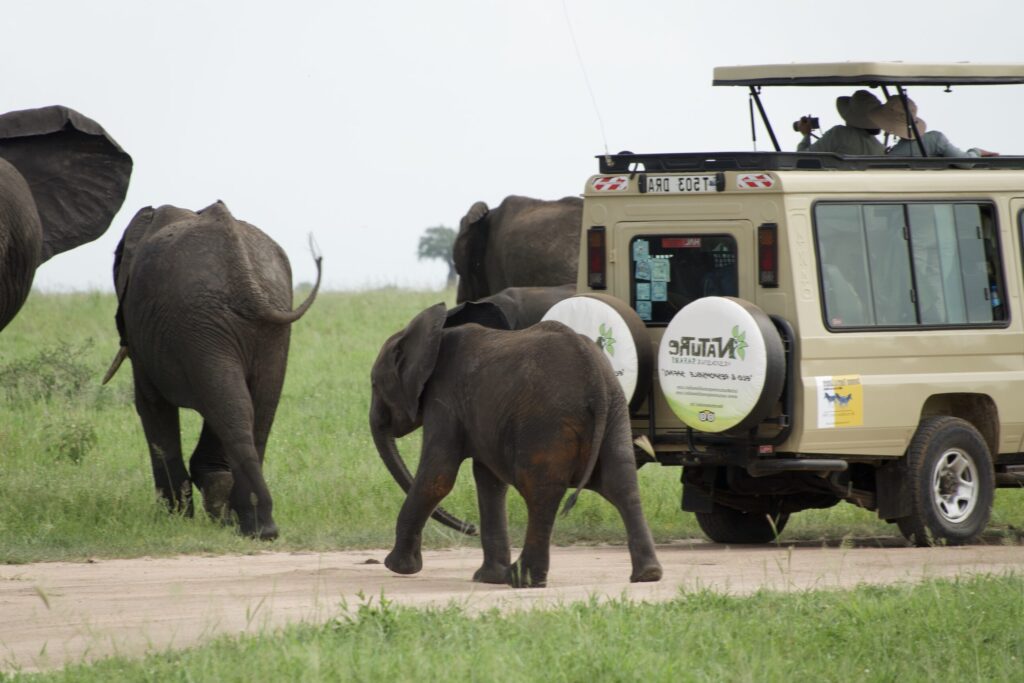
Safari Destinations
Kenya:
Maasai Mara National Reserve: Known for the Great Migration and its abundant wildlife, the Maasai Mara is one of the most famous safari destinations in Africa. It offers excellent opportunities for game drives and hot air balloon safaris.
Amboseli National Park: Located at the base of Mount Kilimanjaro, Amboseli is renowned for its large elephant herds and stunning views of Africa’s highest peak.
Tsavo National Parks (East and West): Tsavo is one of Kenya’s largest national parks and is known for its diverse landscapes, including open plains, volcanic hills, and the red-hued Tsavo River.
Samburu National Reserve: Samburu is famous for its unique wildlife species, such as the reticulated giraffe, Grevy’s zebra, and Somali ostrich. It’s an excellent destination for birdwatching.
Aberdare National Park: This park features dense forests, waterfalls, and the unique experience of staying in tree lodges where you can watch wildlife from elevated vantage points.
Lake Nakuru National Park: Known as a birdwatcher’s paradise, Lake Nakuru is famous for its pink flamingos and is also home to rhinos, giraffes, and other wildlife.
Lake Naivasha: A picturesque freshwater lake in the Great Rift Valley, Lake Naivasha offers opportunities for boat safaris and encounters with hippos and diverse birdlife.
Tanzania:
Serengeti National Park: The Serengeti is renowned for its vast plains, the Great Migration, and the Big Five. It’s a top destination for wildlife enthusiasts.
Ngorongoro Conservation Area: Home to the Ngorongoro Crater, this area offers unique wildlife viewing opportunities within the world’s largest intact volcanic caldera.
Tarangire National Park: Known for its large elephant herds and beautiful baobab trees, Tarangire is a lesser-visited gem in Tanzania.
Lake Manyara National Park: Famous for its tree-climbing lions and diverse birdlife, Lake Manyara is a compact park that offers a variety of wildlife encounters.
Selous Game Reserve: One of the largest game reserves in Africa, Selous is known for its remote wilderness and diverse ecosystems.
Ruaha National Park: This park is known for its rugged landscapes, large predator populations, and a wide range of antelope species.
Zanzibar: While not a wildlife destination, Zanzibar is famous for its beautiful beaches, historic Stone Town, and vibrant culture. It’s often combined with a Tanzania safari for a well-rounded experience.
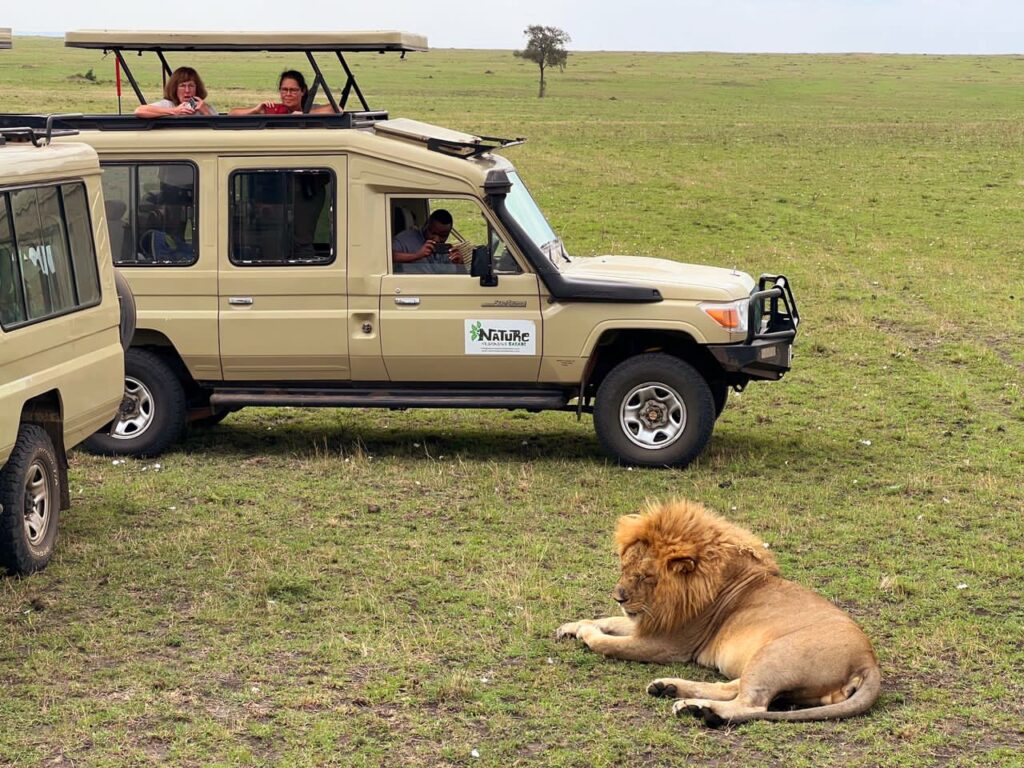
Accessibility
Tanzania:
Tanzania has several international airports, with the main ones being Julius Nyerere International Airport in Dar es Salaam and Kilimanjaro International Airport near Arusha.
Kilimanjaro International Airport is the primary entry point for travelers heading to the northern circuit, which includes destinations like the Serengeti, Ngorongoro Crater, and Mount Kilimanjaro.
Arusha Airport is another crucial hub, particularly for those heading to the northern safari circuit and starting their Mount Kilimanjaro treks.
Smaller airports, such as those in Zanzibar and Mwanza, serve visitors heading to the island of Zanzibar and western parks like Katavi and Mahale Mountains.
Domestic flights and road transfers are readily available to connect you to various safari destinations within Tanzania.
Kenya:
Kenya’s main international gateway is Jomo Kenyatta International Airport in Nairobi, the capital city. This airport serves as a primary entry point for travelers heading to the Maasai Mara, Nairobi National Park, and other central and southern Kenyan destinations.
Moi International Airport in Mombasa is the key airport for those visiting the coastal region and beach destinations along the Indian Ocean.
Wilson Airport in Nairobi is the main domestic airport for flights to various safari destinations across Kenya, including the Maasai Mara, Amboseli, and Laikipia.
Kenyan airports are well-connected with scheduled flights to numerous airstrips within national parks and reserves, making it convenient to reach your chosen safari location.
